
23 minute read
KINDERGARTEN
from THISTLE 2020
KINDERGARTEN
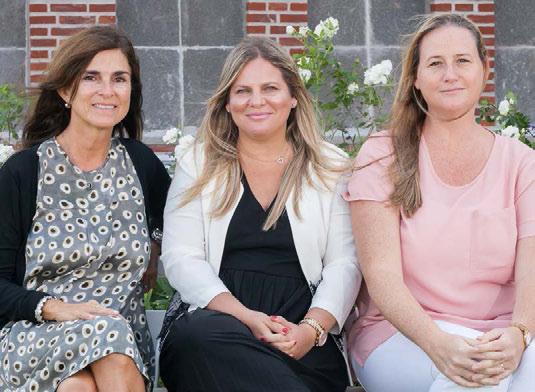
Advertisement
2020 started off as the first year all together in our new building, excited about all the fresh possibilities this new school year in our state-of-the-art Kindergarten had to offer. Unfortunately, three weeks after classes started, we had to abide to lockdown and switch to remote learning.
This was extremely challenging in Kindergarten. Our students’ ages range between 1.5 and 5 years old. Most of them are not autonomous learners, our youngest lack speech and information technology skills, and our programme is fundamentally based on interactions, social skills and learning. Our carefully planned environment and materials also are a central part of our curriculum, making virtual education very difficult. Nevertheless, with the professionalism and commitment of our teachers and staff, the support of families at home, and advice from our external consultants, we designed an emergency remote learning plan based on synchronous and asynchronous activities. These took place through Zoom and Seesaw, two platforms carefully chosen to engage children in learning activities. Teachers were trained in virtual learning, use of platforms and technology to design fruitful experiences.
experiences. We strived for a well-balanced holistic approach, seeking to develop all four aspects in education: academic, physical, spiritual, emotional and social, and artistic. We did author studies in Literature, amazing visual arts productions, engaged in play, music and movement activities, practised yoga, cooked delicious meals, pastries and snacks, did physical activities to stay healthy, amongst many others you will read about in this edition of the Thistle and continued to learn, albeit in a different manner. Both teachers and children made their best effort, and beautiful bonds and affective relationships were formed.
Everything needed to be re-thought of and analysed through a different lens. Things that had been done year after year were challenged and had to be accommodated to this new reality. But as in all crises, there was great growth and learning. We conducted a deep curricular review, improving our plans and proposals with significant learning experiences for children.
A new way of evaluating our children was designed: "Collegiate evaluation" by means of virtual interviews with families, who with the help of a questionnaire provided their view of their children’s learning process, which combined with the information compiled by the teachers in Zooms and from the evidence documented by digital portfolios, resulted in a holistic report enriched by all eyes.
It was not easy; many times we felt disappointed, overwhelmed, sad and tired. We missed social interactions and our daily routine at the Kindergarten. But we came together as a community, supporting each other through difficulties, learning and putting our creativity, communication, problem solving and collaboration skills to the test. We became stronger and closer, and we valued the wonderful Kindergarten community we have.
We hope that through this edition of The Thistle you can get a glimpse of all the wonderful experiences we enjoyed throughout this very special year, when we became even more resilient and valued education, all together, against all odds.
We would like to thank staff, families and school authorities for their support and affection.
Kindergarten Leadership Team
Vicky Ayam - Kindergarten Head Alejandra di Tada - Kindergarten Deputy Head Veronica Müller - Kindergarten Deputy Head
Staff 2020
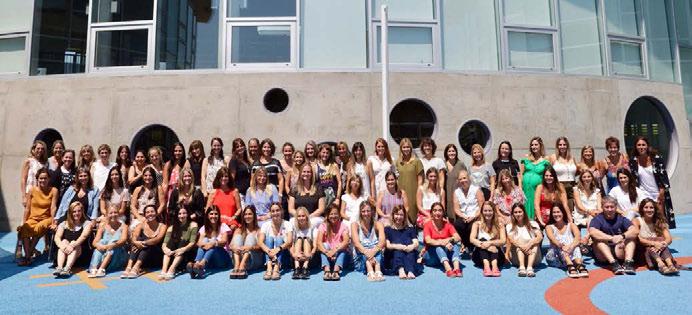
Top row: Carolina Von der Walde, Luciana de Miguel, Maggie Morgan, Marina Monachino, Florencia Duda, Agustina Molfino, Mari Goitea, Maite Peralta, Laura Servente, Maia Dejean, Jessie Gueli, Silvina Dietsch, Daniela Rubini, Tania Dermen, Wendy Furlanetto, Sofía Vidal Raffo, Eliane Kraglej, Guadalupe Rodríguez, Andrea Leers, Katherine García, Pía Cardone, Zelmira Zavalía Lagos, Mayra Pistoni, María Elena Martínez Mingo, Micaela Tancetti, Florencia Alonso, Carla Pierucci, Stephanie Wilkinson, Romina Porcelli, Sabrina Meriggi, Florencia Mondotte
Middle row: Chantal Abente, Luz Alonso Bureau, Ángeles Becker, Dominique Ezquerra, Guadalupe Gómez, Alejandra di Tada, Vicky Ayam, Verónica Müller, Sylvia Papazian, Carolina Moore, Eugenia Lachnicht, Cecilia Hawkins, Joanna Ramauge, Paz Rodríguez Turano, Carla Bortolini, Valeria Ferrari
Bottom row: Lindsay Hynes, Delfina Rosasco, Julieta León, Valentina Rivas Romero, Liliana Faiad, Camila Olmedo, Francisca Peralta Martínez, María Eugenia Erhardt, Débora Singer, Mercedes Magnasco, Florencia González de León, Laura Putrino, Sol Casalía, Josefina Miretti, Lucía López Gestoso, Tomás Albisu, Guadalupe Romero
Absent: Fernanda García Morillo, Javier Lázaro, Agustina O’Grady, Victoria Guida, Fátima Vergara
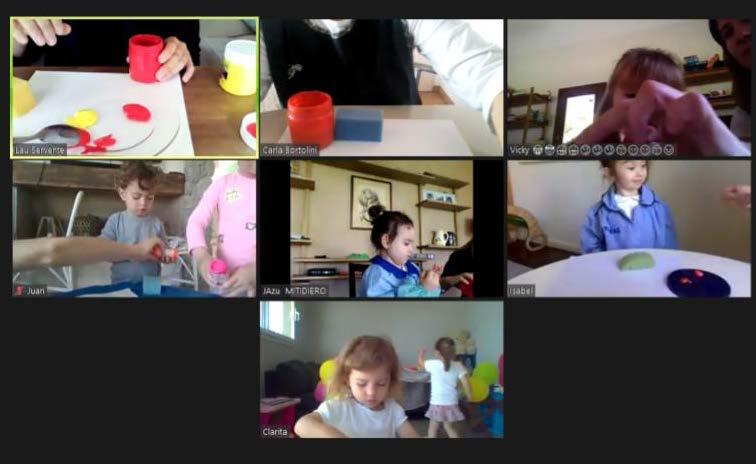
K2
Sponges
Even though this was a very challenging year the 2-year-olds managed to enjoy various Art activities through Seesaw and Zoom sessions.
One of the activities they liked the most was Stamping with Sponges. They started with a big sponge exploring the different prints it left on a big sheet of paper or cardboard. Then we proposed cutting the sponge in two to get smaller prints and also using different colours of paints to observe the new colours they made.
In the next activity the children worked with even smaller sponges, creating beautiful patterns on the different surfaces they used. The children had a great time exploring the different shapes and colours they were able to make!
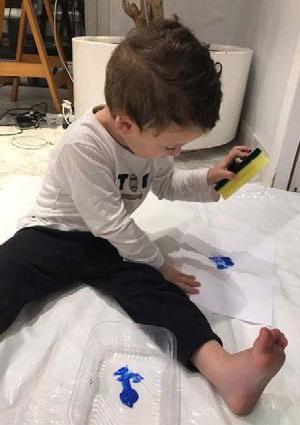
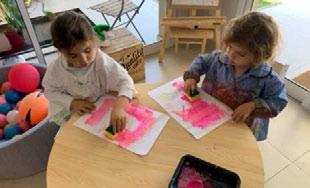
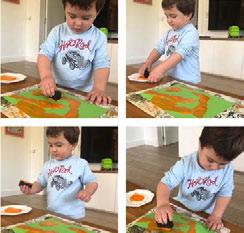
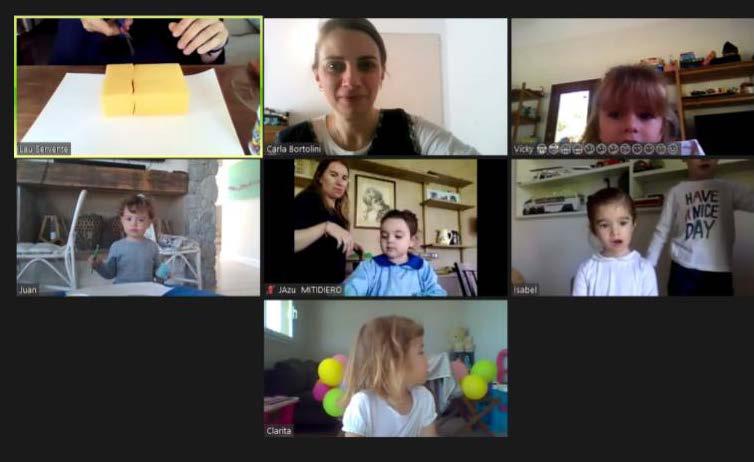
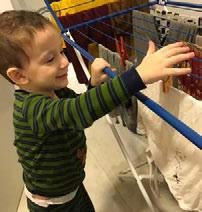
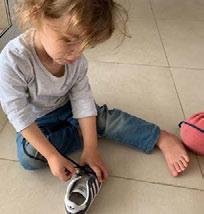
K2 Practical Life
This year was very challenging as we had to find different ways to teach two-year-olds virtually. As the children were all at home, we proposed Practical Life exercises following the Montessori method. These activities develop motor coordination, independence, concentration, and a sense of responsibility.
Taking into account the two main areas of development, care of self and care of the environment, we suggested various activities such as washing and folding clothes, cutting fruit, taking care of a plant, cleaning windows, tidying up toys, etc.
We were glad to see the wonderful response of the children as they performed the different exercises proposed, enthusiastically helping their parents with the house chores.
K2 Yoga
During the home learning period the K2 children enjoyed Yoga lessons fitted to their stage of development. At this age children move constantly in order to learn, so we proposed a dynamic way of practising Yoga activities.
The sequence included six animal postures they were already familiar with, like the cobra, the cat, the dog, the frog, the lion and the butterfly. We guided them through the movements and postures using images of the animals, working in Zoom sessions.
The children enjoyed playing interactive games and stories that made Yoga a fun activity to learn.
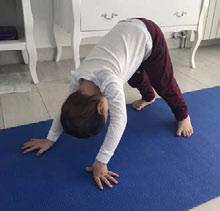
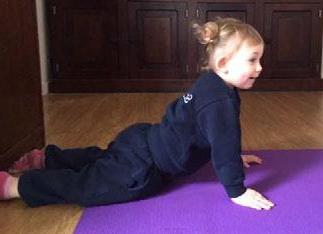
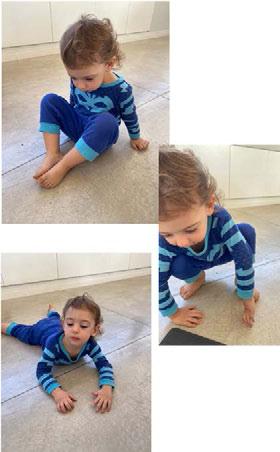
K3
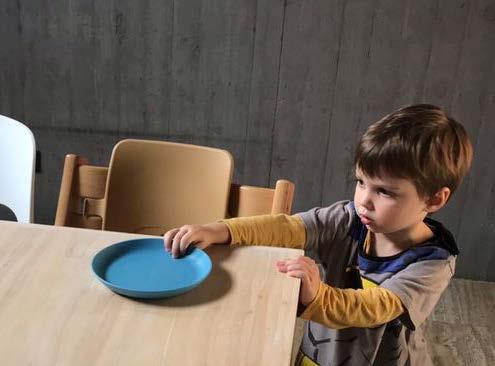


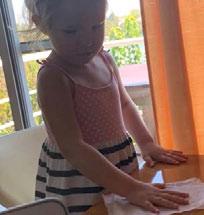
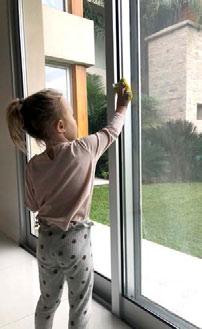
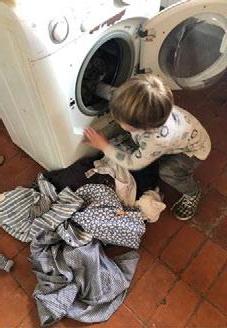
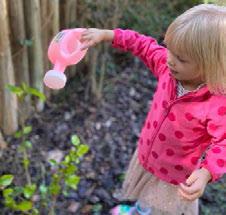
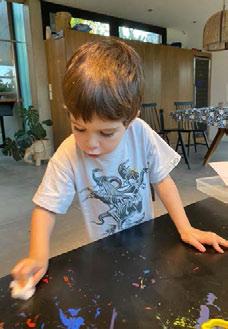
Practical Life "Green Challenges"
In order to try to reach their maximum potential in all areas of development, K3 worked on this sequence. Carrying out these types of activities progressively helped the children to strengthen their self-esteem, fine motor coordination and explore the environment in an active role. The idea was that adults could guide and observe, encourage and stimulate, focusing on the process and not on the result. During this sequence, the teachers encouraged the children to have sustainable habits, environmental awareness and to immerse them in the respect and care of our planet. The sequence was presented with the story Michael Recycle. After the story we invited them to think how they could take care of our planet, and what things are good or bad for it. Then we sent them a series of challenges where they had to reuse and recycle materials they used at home, such as bottles, bottle tops, paper, plastic, and others.
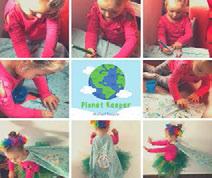
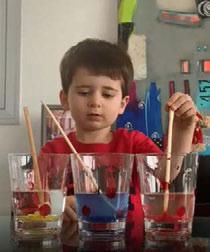

Mixtures
K3
In this sequence, we watched what happened with different mixtures, using water and different elements. The main objective was to hypothesise what was going to happen before the children mixed the ingredients. Afterwards, we would check if their hypotheses were correct or not. The teachers invited the families to ask questions during the whole process.
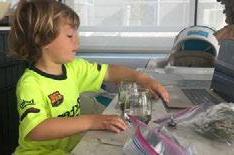
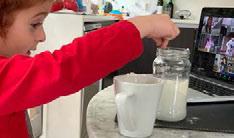

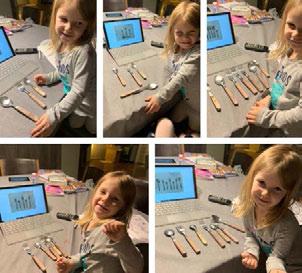
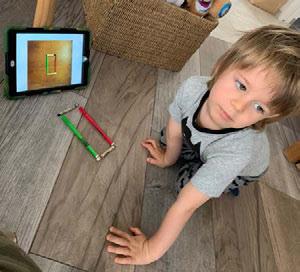
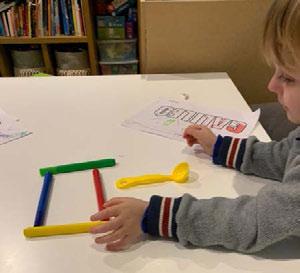
Patterns
In this sequence the children worked with positions and notions of space with different elements. They had to pay special attention to the position of each object, its orientation and how they are arranged in space, and then they had to place their own elements in the same way as the shown picture. Although some were very difficult, they were able to sort them out very well!
K4
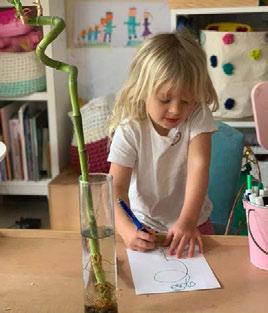
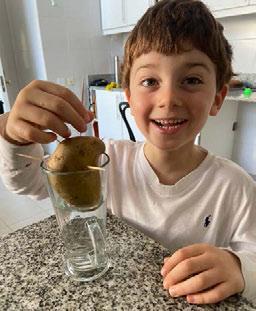
Germination
During spring time, K4 took advantage of the weather and carried out a germination project. We discussed and learned about the plants’ needs and then decided to experience them. For this, we planned two activities: one was to make a structure with chopsticks, water and onions/potatoes and the other one was to put seeds in two different places to see what happened in each case.
First, we prepared the seeds. We put them inside two plastic bags with cotton and water to prepare the experiment: one bag would receive sunlight and the other one would not. Throughout the weeks, the children registered with drawings what they saw. The results were conclusive: the seeds that had contact with light grew fast and strong and the other ones rotted.
For the second experiment, we built the structure to put the potato in and observed all the changes. The idea was to see the roots more clearly and the stem growing each day. Some were able to see it and some were not, but all the kids were observing the germinations to notice what was happening.
The main goal of this Science project was for the children to develop observation skills. We noticed that the records the students made were very detailed and they also enjoyed taking care of the plants. Congratulations K4, you did amazing work!
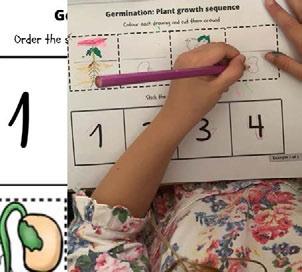
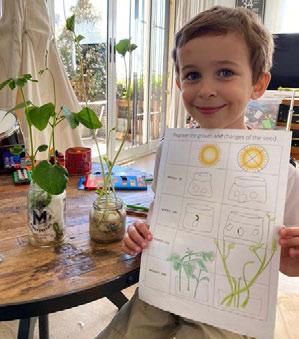
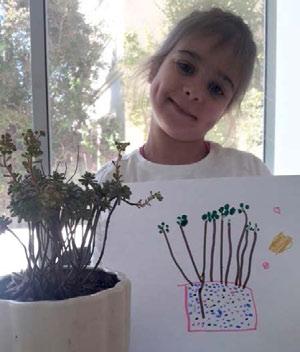
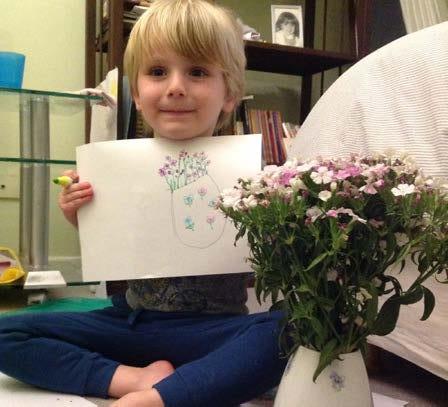
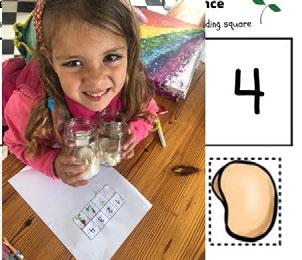
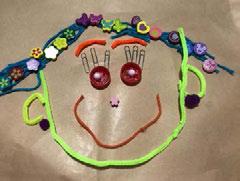
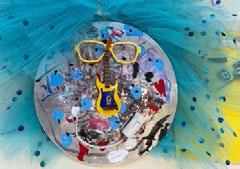
K4
Hanoch Piven: Imaginary Characters
This year together with the K4 children we learnt about the artist Hanoch Piven. He was born in Uruguay and moved to Israel with his family at the age of eleven. Hanoch is known for a very innovative technique: making portraits using everyday objects. The objects he uses, relate to the job or interests of the person he is portraying.
We presented the artist and his technique to the children at a Zoom Meeting. We asked the parents to prepare a box with many objects such as feathers, wool, fruits, sticks, bottle tops, feathers, plastic knives, necklaces, toys, and any other objects they had at home. With Hanoch’s inspiration, the children started to create different imaginary characters which they had to name, say what he or she liked to do and explain why they chose the materials they had used.
Through Seesaw we shared different activities, such as changing the facial expressions using the same objects, creating a character with a specific list of objects and also looking around their house to find "faces" in objects.
After all the work we did, we had the opportunity to meet Hanoch Piven and share a virtual workshop with him. It was a great experience to get to know the artist, talk to him, ask him questions and to receive feedback while each one of the children were creating their own imaginary characters.

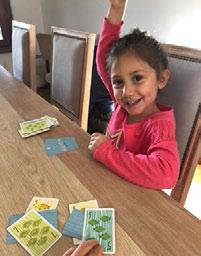
Maths: Playing with cards
This year the K4 children continued learning about numbers by playing different card games, such as the "War Game" and "Casita Robada". They were able to work on the notion of number, recognition of numerals and counting. The concept of higher than/ lower than was thoroughly worked throughout the diverse "War Game" variations. Therefore, we started playing with numbers from 1 to 6 and ended up with 1 to 10. As regards "Casita Robada", they played with numbers from 1 to 6. The children were very enthused and enjoyed these games. Apart from learning numbers they also learnt to respect rules, tolerate frustration each time they lost, and have fun with their family. This was a superb way of reinforcing numbers with our young students!
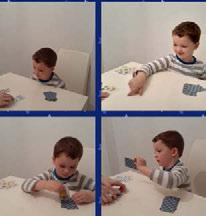
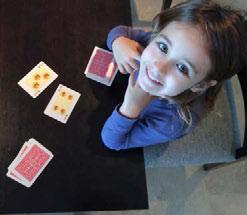
K5
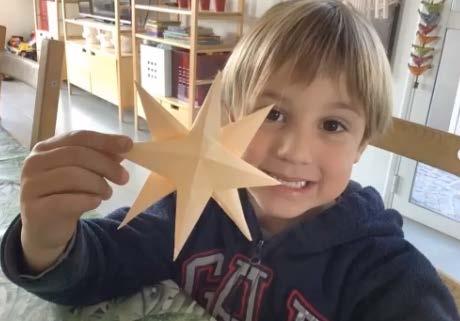
Author Study: Oliver Jeffers
The K5 groups carried out an investigation on Oliver Jeffers as an illustrator and author, learning about his life and the methods he uses to make illustrations and stories. The starting point was the story Here We Are due to the interest of the children in NASA and SpaceX launch May 30th, 2020. Many other books were read such as Lost and Found, The incredible Book Eating Boy, How to catch a Star, Stuck ,The Day the Crayons Quit, and The Way
Back Home.
After reading each story we had different activities to foster children’s imagination in the context of each book. For example, after reading The Way Back Home and Here We Are, they created their own planet, named it and wrote down its name. Another activity was to decide what they would take in their suitcase if they had to go to the South Pole and make a flyer explaining that they had found a penguin.
The children were extremely enthused with all the stories read and asked for more! They enjoyed them during Zoom meetings and Seesaw activities.
In order to close up this lovely sequence, we had a Zoom encounter with IN TOUCH WITH THE AUTHOR, where Lydia Stevens narrated Lost and Found, enchanting the children with props and making them participate in the narration.
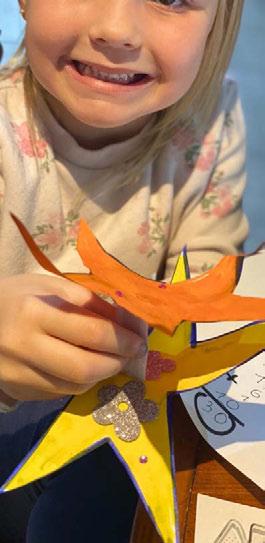
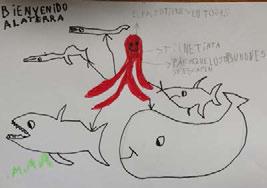

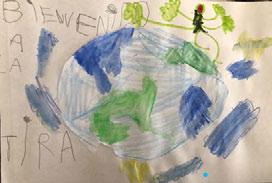
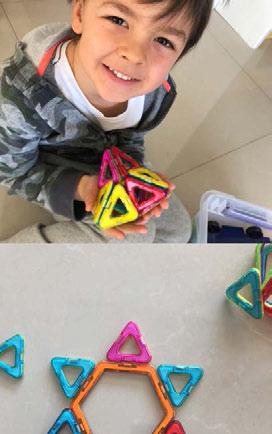
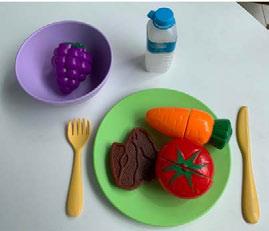
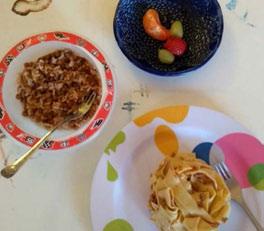
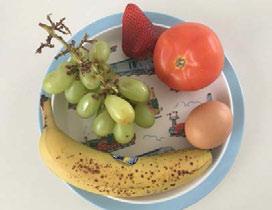

K5 Suggestions for healthy eating
For this project K5 students worked on learning and recognising healthy eating habits as well as good food hygiene. They interviewed the school’s nutritionist to learn about her profession and ask her questions.
We carried out various activities during this project like registering what food they ate daily and classifying it according to its nutrients. The final activity of this project was to create a model healthy and balanced plate of food using clay and then paint it, taking into account the real colours of the different ingredients and a balanced diet which should be a colourful and varied one. They loved to see the different colours on their plates!
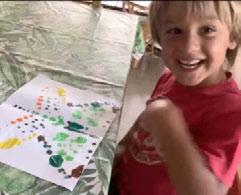
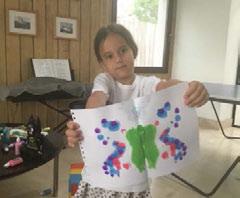
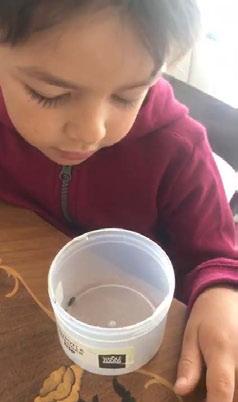
Minibeasts and insects
Through an interdisciplinary project called Production of a small Encyclopaedia on Minibeasts and Insects, we wanted to expand our children’s knowledge about some physical characteristics and behaviour of ants, spiders, bees, butterflies/moths, ladybugs, pill bugs, dragonflies, snails and grasshoppers.
Children engaged in the task of reading to learn more about the different insects and minibeasts and writing for different purposes: taking notes, informing others, registering information and writing down some questions with the teacher’s help to interview a biologist to find common and different characteristics in some animals, the environment in which they live, what they eat and the way they move, among others.
Students participated assembling a small encyclopaedia as a way to communicate what they had investigated and learnt, they sorted insects from minibeasts, they went on a virtual and real-life scavenger hunt to look for minibeasts and insects around their houses and gardens, they made some drawings that became illustrations for the small encyclopaedia. They also asked some difficult questions such as: "How do dragonflies nymphs get out of water?", "How do they open their wings?", or "Are bees larvae when they are born?", that were answered by the biologist Marcelo Soria during the interview.
It was a wonderful experience and a great way to end this year! The children were really engaged throughout the project and showed genuine interest and desire to learn about insects and minibeasts. They carried out all activities enthusiastically!
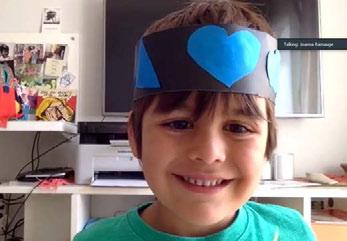
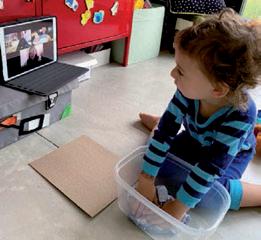
Art Exhibition
The Art Exhibition is already a tradition in the Kindergarten. Each year themes are chosen for each age group to work on and then we surprise families with an incredible tour of the premises transformed into an amazing showcase of all the work done throughout the year, not only in Arts but in many different areas as well.
This year we faced a challenge: how could we show everything that had been done during the year together with families, in such a special context? That is when the concept of bridges first appeared: St. Andrew’s Kindergarten as a bridge between knowledge, home and Arts. We understood that this year the Kindergarten had been a bridge, a way to connect children with their home life and knowledge and Arts. We could not have done it without our families. They worked side by side taking ownership of what the teachers proposed by taking pictures, looking for material, connecting children to the Zoom lessons, etc. The bridges were assigned after a thoughtful analysis of which one was suitable for each age: K2 Bridges between shapes and movement K3 Bridges between stories, toys and theatre K4 Bridges between colours characters and dance K5 Bridges between styles, landscapes, music and words
We are very proud of the final product, which is the combined work of families, teachers and students.
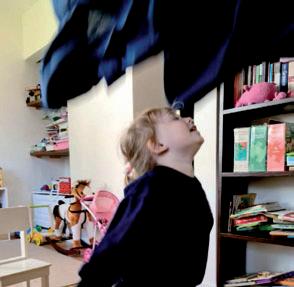
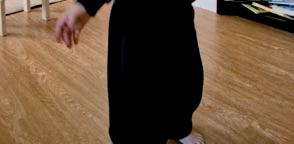
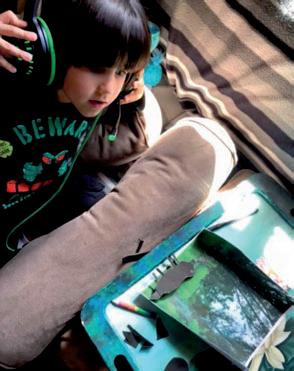
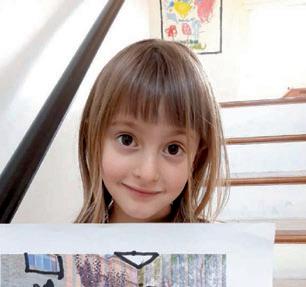
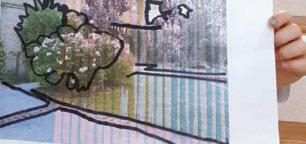
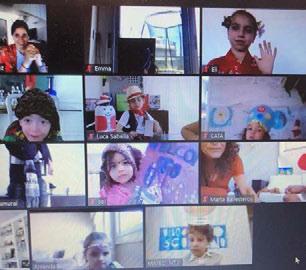
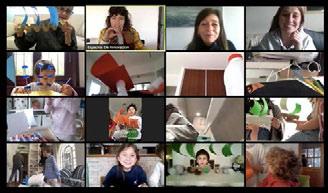
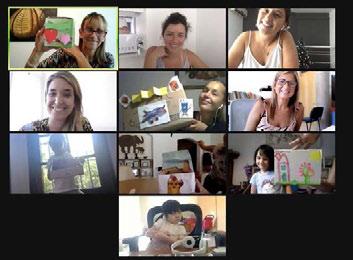
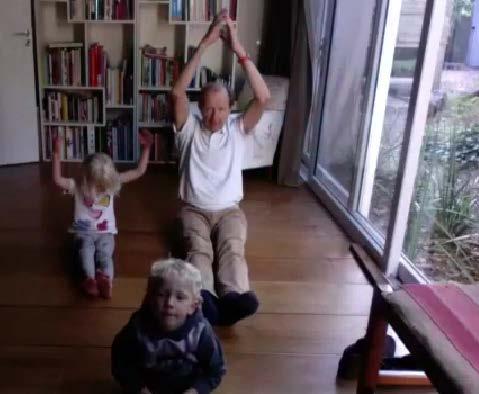
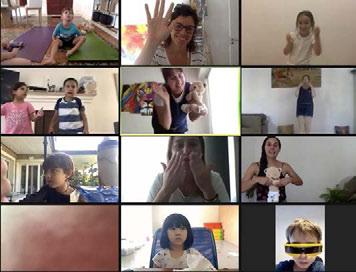
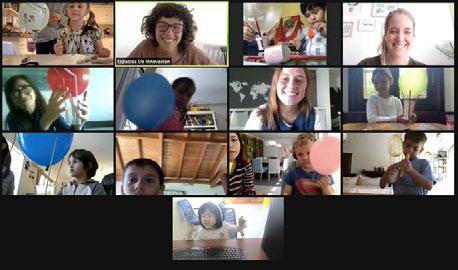
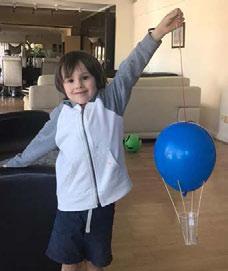
Workshops
During 2020, our traditional Workshops evolved into what we decided to call Espacios de Innovación, an online proposal for the whole Kindergarten students and their families to enjoy while being at home. Teachers prepared different activities and proposals for each afternoon to surprise children in our Zoom meetings.
These are the Espacios de Innovación we had: Performing Arts: We enjoyed listening to stories, songs and poems that we then dramatised and had fun playing with costumes and theatrical elements.
Creative Expression: We had lots of fun doing art activities and crafts while learning about colours, artists and art materials and techniques.
Mindfulness and Yoga: we learnt yoga postures, relaxation techniques and beautiful songs to help us calm ourselves and regulate our emotions.
Cooking: each Wednesday we had fun cooking different recipes while learning about ingredients and food around the world.
Makerspace and Construction: through different challenges we learnt about engineering and tinkering.
Science and Experiments: we explored crazy ideas and experiments to learn about water, light, rocks and other elements of nature.
We also had asynchronous proposals through a Seesaw Blog where children could find tutorials to make Origami projects, learn about Coding and Technology and fun games to build and play at home.
It was a great experience where the Kindergarten families had the chance to get together each afternoon to enjoy active and creative learning through innovative proposals.
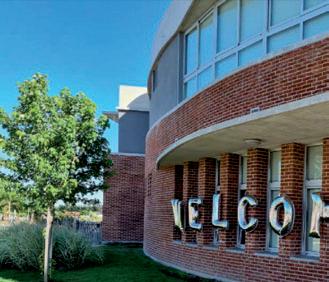

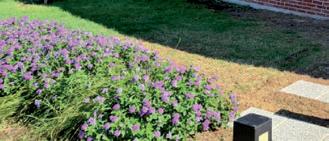

VaP: Vuelta a la Presencialidad
With great excitement and joy, we prepared our Back to School for the last weeks of the year for the K5 students. The objective was to reconnect emotionally and socially with their Kindergarten, friends and teachers before going on to Primary School. The spirit during the planning and preparation of this short Back to School was of joy and enthusiasm among all the staff involved. The children came to school in groups of 10 students, to enjoy the outdoors of our building, carefully respecting the COVID protocols. We received them with music and a big shiny sign that read Welcome Back; it was really a party! The children brought a snack, they played in the playground and had a great time with their friends and teachers. It was a short and moving moment, which gave closure to their Kindergarten years.

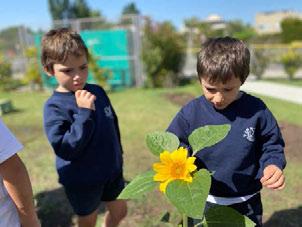

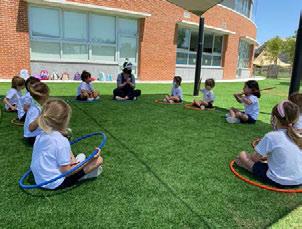
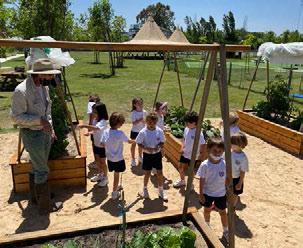
Graduates
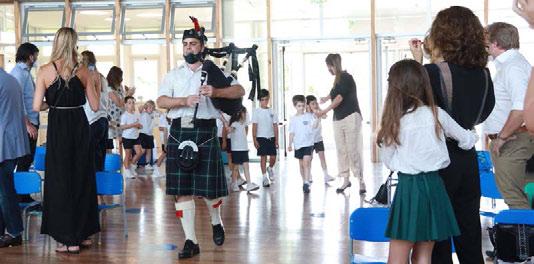
Our Graduation Ceremonies were very different this year due to the circumstances in which we were living. However, the meetings were very intimate which made them extra special. Each K5 groups had their own celebration, to which, due to COVID protocols, only parents were allowed to come. As is traditional in our School, our Bagpiper Oscar Llóbenes, led the children into the Hall where they were greeted with a big round of applause. After some moving words from our Headmaster Sebastián Rubens y Rojo, Vicky Ayam, the Kindergarten Head, addressed the children and congratulated them on their hard work in such a different year, and called them our "Heroes" due to the resilience, flexibility and adaptability they showed throughout the whole pandemic.
This year parents handed their children the diploma, which was also something new but very much appreciated by families.
Miss Vicky also thanked the Room Parents who supported the School in this particular year and recognised their work with a beautiful bouquet.
We also celebrated two special teachers who have worked for 25 years at our school, Miss Ceci Hawkins and Miss Flor Mondotte. We thank them for their hard work and commitment during all these years.
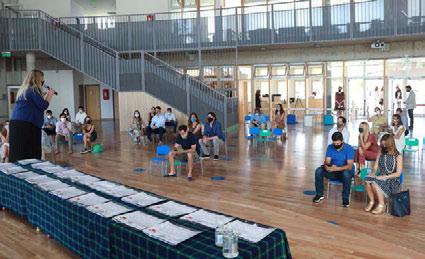
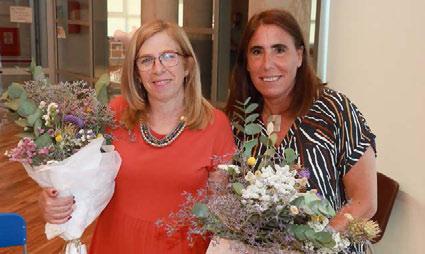
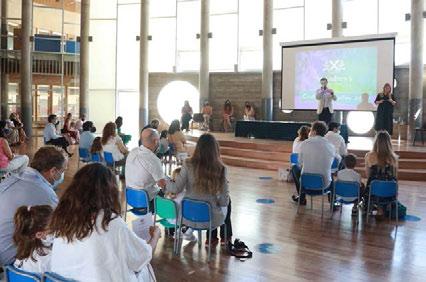
Graduates 2020
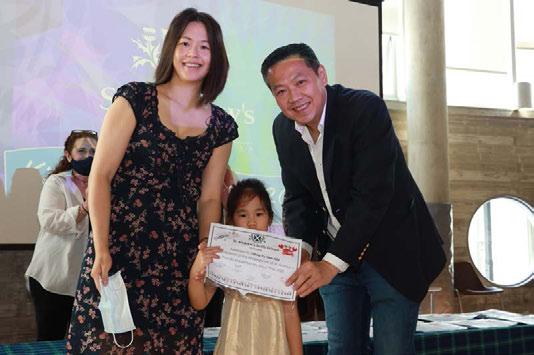
K5A CRABS
Ignacio Arias Tahier - Eduardo Barreto Anzorena - Benjamín Feldmann Monteiro - Felipe Fried - Félix Garicoche - Simón Hahn - Juan Igelka Gutman - Francisco Maseda - Felipe Pache - Benjamín Padrones Mola - Tomás Perrens - Samuel Schaffer - Teo Schumacher - Elena de Álzaga Unzué - Alexia de Varge Maldonado - Ilaria Do Pico Donovan - Olivia Hsu - Damasia Labadens - Mila Muvdi - Mía Tredicce - Amalia Zenarruza
Teachers: Maggie Morgan - Katherine García - Dominique Ezquerra - Camila Olmedo
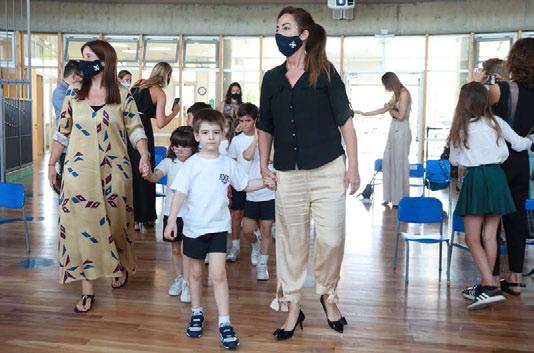
K5B SEAHORSES
Gabriel Álvarez Ballesteros - Francisco Ávila Carrizo - Emilio Balaguer - Jerónimo Bernal - Santos Bulgheroni - Tomás Daireaux - Mateo Intili - Sheng Jia Lan - Mateo Antonio Mura - Lucas Olmos - Luca Sabella - Máximo Thompson - Bautista Weiss - Sol Defferrari - Victoria Krigun - Elina Magram - Amanda Miodyk-Borghetti - Emma Podgaetzky - Catalina Thomas - Martina Vergara - Ana Weber
Teachers: María Elena Martínez Mingo - Florencia Alonso - Debbie Singer - Josefina Miretti
Graduates 2020
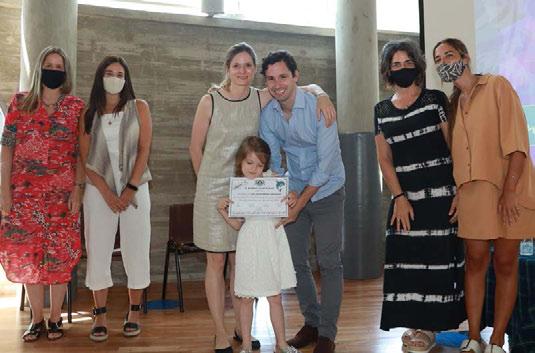
K5C DOLPHINS
Gregorio Barbosa Moyano - Milos Bulgheroni - Facundo Frías Carrión – Tomás Igarreta Sohr - Sebastián Louge - Juan Martínez Tenreiro - Sixto Montanelli - Juan Marcos Mura - Nicolás Muzzi - Nicolás Rio - Ignacio Thomas - Tomás Tredicce Albano - Fermín Viñale Metrebian - Sofía Elissamburu Granada - Joaquina Estivariz Barilati - Margarita Martorell - Catalina Ortiz de Urbina - Shayo Keren - Emma Vago - Isabel Weber
Teachers: Valentina Rivas - Camila Olmedo - Luciana de Miguel - Tania Dermen
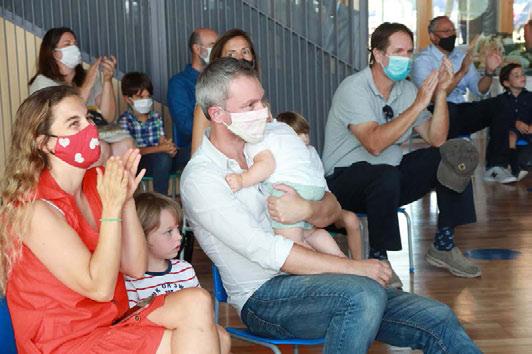
K5D PENGUINS
Thiago Calello - Gerónimo Garat - Francisco Invernizzi Anselmi - Felipe Jeannot - Rafael Michanie - Félix Olivera - Justo Plaghos - Felipe Planas - Francisco Ruedín - Marcos Santamarina - Oliver Schreck - Margarita Bulacio Carrera - Martina Copushian - Nina Liz del Piano Runge - Luján González Victorica Odriozola - Clara Hagelin - Hahn Francisca - Martina Mas Mare - Sofía Princz - Sofía Randrup Castellan
Teachers: Tania Dermen - Mercedes Magnasco - Silvina Dietsch - Eliane Kragelj
Graduates 2020
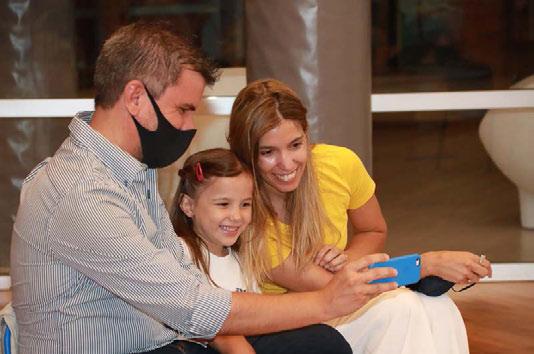
K5E TURTLES
Thomas Bereskyj - Salvador Coates - Silvestre Fernández Besada - Facundo González Luro Roca - Vito Miret - León Noble Herrera Defranceschi - Juan Cruz Rodríguez Varela - Bruno Sasson - Pedro Silvestroff - Mateo Sorrosal - Federico Wolf - Herman Zupan - Martina Dromi Oberbeil - Isabel Grandío Lardizabal - Amelia Martínez Saravia - Amalia Muñiz - Delfina Omahna - Maitena Orteu - Jazmín Rugnone - Paz Santiago Laplane - Juana Vidal
Teachers: Agustina O’Grady - Florencia Mondotte - Cecilia Hawkins - Catalina Furlanetto

K5F SHARKS
Jerónimo Aguirre Buch - Ryan Douglas Ayling Gurvich - Salvador Bellagamba - Facundo Bertero Rossi - Camilo Contepomi - Mateo Gerino - Benjamín Giorgiutti - Benjamín Legarre - Franco Mayer Wolf - Tomás Torbidoni - Rocco Villa Montagna - Bautista Zubieta - Micaela Anauch - Valentina Anauch - Maia Assefh Hampton - Mía Victoria Campolongo - Isabella Corleto - Sofía Hughes - Emma Johansson - Inés Landesman - Simona Lubel - Teresita Pommies
Teachers: Caro Moore - Sofia Hug - Guadalupe Romero - Laura Servente










